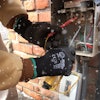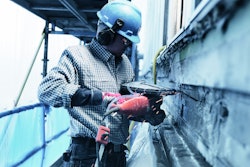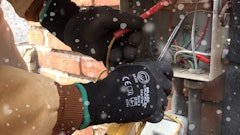
A cooled helmet designed and developed by leading researchers in Qatar has the potential to significantly reduce the skin temperature of construction workers by up to 10 degrees centigrade. This will allow for safer and more comfortable working conditions in the summer months, according to researchers working on the new system at Qatar University.
The solar-powered helmet has been rigorously tested, patented worldwide and put through the production stage by a group of Doha-based scientists in cooperation with the organization responsible for building the 2022 FIFA World Cup facilities in Qatar, the Supreme Committee for Delivery & Legacy (SC) and Aspire Zone Foundation (Aspire). More units have now been ordered with the objective to incorporate them for the coming summer period across SC projects.
“Our concept is to use a solar-powered fan to blow air over a cooled material at the top of the helmet, which will then come down over the front of the person’s face and provide a cooler micro-climate for the worker,” said Dr. Saud Abdul-Aziz Abdul-Ghani, professor at the College of Engineering at Qatar University.
“We are confident that this technology will create more comfortable and safer working conditions, and there is just a minimal increase in weight to the helmet. By reducing the temperature of the head and face, the rest of the body will naturally follow and ensure that workers have a constant flow of cooler air to refresh them throughout their day.
“The material we use inside the helmet is Phase Changing Material (PCM ) contained in a pouch, and this increases the total load of the helmet only by 300 grams. This provides cooling in hot conditions for up to four hours straight. People when working in the sun will get cool air coming down at the front of their faces. When they go for a break, they throw it into a refrigerator and pick up a cold pack and put it into their helmets,” concluded Dr. Saud. “We did research on the best areas to lower body temperature, and it was the head and face. The additional cost is just twenty dollars in comparison to a normal passive helmet, but the results are felt immediately in terms of less lost time on site due to heat-related complaints.”



















